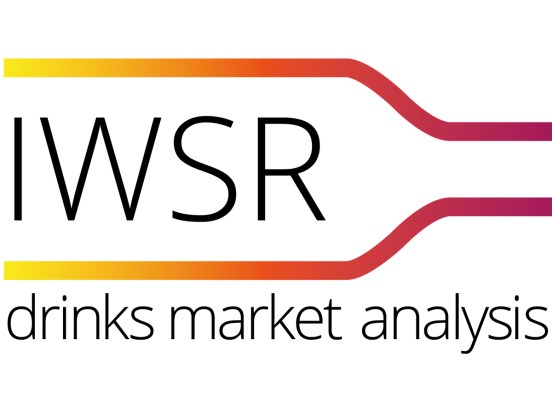By Charlotte Cowan
The huge number of wine brands and varieties available in New Zealand makes the market extremely competitive for consumers and importers.
Medals from wine competitions or Sommelier tastings can significantly enhance purchase decisions, as many regard medal awards as benchmarks of quality and excellence.
This, in turn, can boost your sales or exporting opportunities. Here are what award medals really mean and how you can leverage them to elevate your brand.
The points system
Most New Zealand wine competitions and critics’ tastings use the international 100-point system. Scoring in this system is typically as follows:
85-89 – Bronze Medal
According to Bob Campbell MW, Bronze Medal wines are: “Good to very good, serviceable, fault-free wines for everyday drinking. Some of these will also be cellarable.”
90-94 – Silver Medal
Campbell says 90 points is a silver medal in many wine competitions, and that indicates a very high quality wine. “Aside from technical quality, it will possess character, balance and that hard-to-define element, style. And also textural refinement, as opposed to coarseness,” he says.
95-100 – Gold Medal
According to Campbell, these wines are in the big league. “They are truly excellent wines which are fully representative of their region, variety and maker; wines of pedigree, great balance and harmony.”
Double Gold Medals
Double Gold medals are awarded to wines that receive a Gold Medal from each judge on the panel in a wine competition.
Trophies
Every wine competition is different when it comes to trophies, but typically the judging panel will vote on which wine from the Gold or Double-Gold (if applicable) selection of each varietal is their top pick. That one wine becomes the top wine and will go forward for Trophy consideration.
What consumers see first…
According to Master Sommelier Cameron Douglas – who uses the 100-point system and produces his own wine medals for brands to feature on their bottles – price point and label imagery are the first two and most important things that draw customers to a particular brand. However, medal stickers can help cement a purchase decision.
“If they notice a metal sticker or a rating of some kind, then this will help them take that bottle off the shelf, perhaps read the back label and ultimately buy it,” he tells The Shout NZ.
“Wines that are over $50 bottle have a particular audience and buyer – if a customer is willing to spend that much money, then support from stickers can be very important.
Conversely, if they’re paying $250 a bottle, a rating by a critic may not help at all.
“My experience shows that if you continually have a wine reviewed, even when the new vintage rolls, this can show consistency in terms of points score for ratings, which can solidify sales,” says Douglas.
Using medals in marketing materials
Selling wine at retail, liquor, stores, or supermarkets, is fiercely competitive. So one of the simplest ways to leverage wine medals is by featuring them in all marketing materials, including labels and packaging, social media and email campaigns.
By highlighting award medals on your wine bottles and showcasing the awards on social media, consumers who are unsure of which brand to buy or try will be drawn to your label as to them it may signal quality and recognition.
According to Cameron Douglas MS, this is particularly true for wines over $15 RRP.
“Any opportunity to draw the customers eye to a bottle beyond the price and label has to be taken advantage of,” he says.
“I do feel that this is price point driven. I don’t see any wines less than $15 a bottle at retail with award stickers or recognition on – this would be rare.”
It’s also important to inform your consumer and trade mailing lists about any recent award wins. You could consider offering exclusive deals to consumers or on- or off-premise businesses to encourage purchases.
How importers can leverage wine medals
Importers can leverage wine awards to reach a new audience of on-premise buyers, consultants, and Sommeliers, which can ultimately drive sales and expand their customer base.
“The importers of wine need to take advantage of any and all opportunities to promote a new product,” says Douglas.
“The campaigns that are used today include online reviews by noted or noteworthy wine critics, email campaigns, Instagram, and Facebook campaigns, and more recently, direct email.
“In order to measure success in sales or return on investment in this kind of advertising, a digital sticker or similar on the website for that wine or on the bottle itself is just another tool to draw attention.”
Tap into influencers and media (social and traditional)
With social media continuing to boom, local influencers on TikTok, Instagram, Facebook or X (formerly Twitter), can amplify the impact of wine medals.
It’s important not to pick any old influencer, research wine bloggers or critics and send samples of your wines to wine for review. Their reviews and endorsements can reach a wide audience and add credibility to your brand, encouraging sales.
For traditional media, sending press releases announcing your awards may generate free publicity in wine or industry publications, or local newspapers.
Get educating
Educating consumers about the importance of wine medals can enhance their appreciation and drive sales. Develop campaigns that explain the significance of the awards, the judging process, and what it means for a wine to receive a medal.
For the on-premise, ensure that your sales staff is knowledgeable about the awards and can effectively communicate their importance to customers.
Wine medals can be powerful tools that can enhance your marketing strategy, build credibility, and drive sales.
By featuring these awards in your marketing materials, educating consumers and collaborating with media, you can boost your brand and increase revenue.
In the competitive wine market, a well-executed strategy centred around your award-winning wines can set you apart and ensure lasting success.
How to catch up with The Shout NZ…
Online, updated daily with its own unique content and breaking news.
Our weekly newsletter – free to your inbox! Subscribe here.
We are also on Facebook and Instagram!




